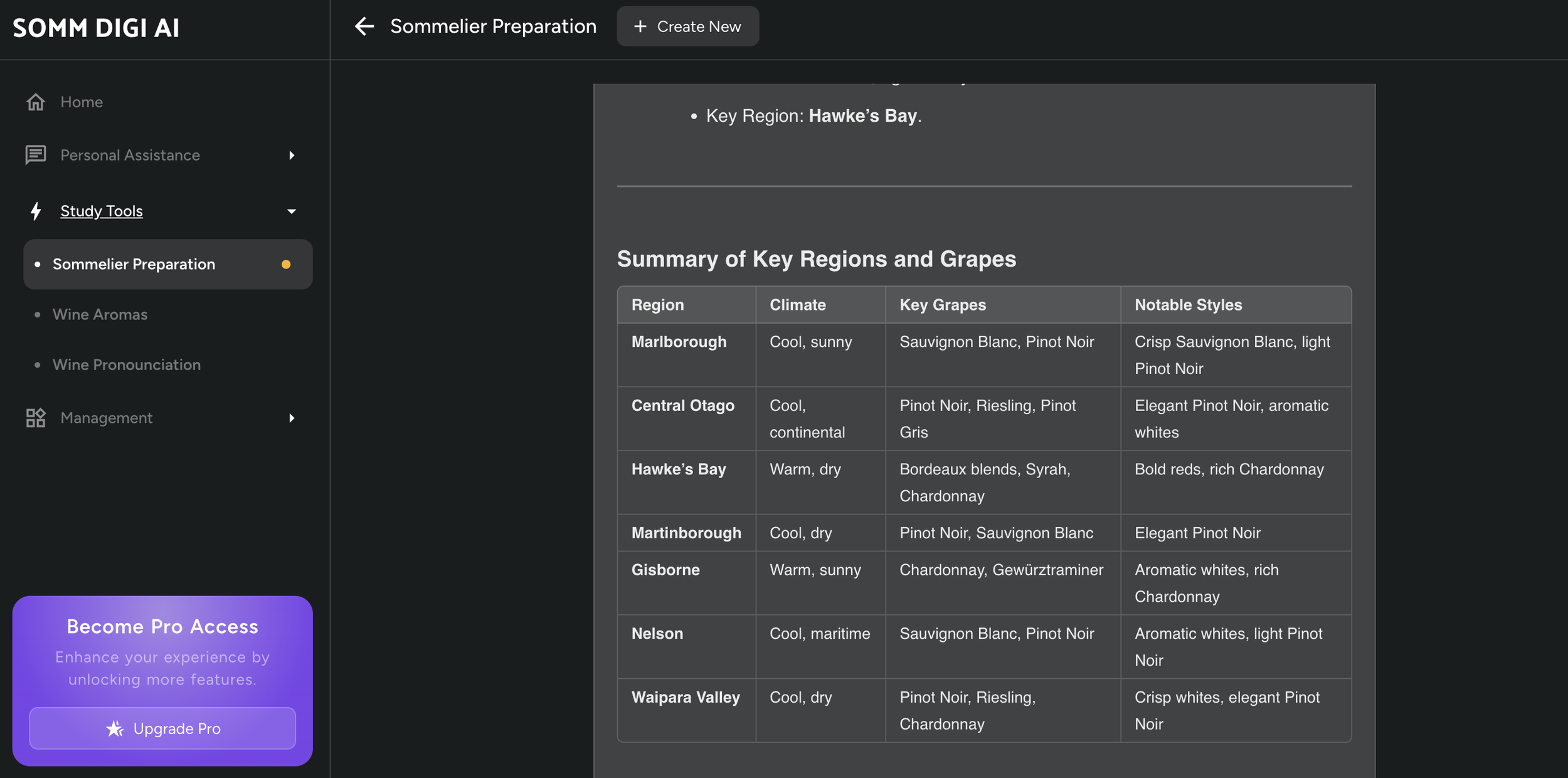New Zealand - Introductory Sommelier Level 1
Here’s a beginner-friendly breakdown of New Zealand for your Introductory Sommelier Course. New Zealand is renowned for its cool-climate wines, especially Sauvignon Blanc, and its focus on sustainability and quality.
Key Topics to Study for New Zealand
1. Climate & Soils
Climate:
Cool Maritime Climate: New Zealand’s long, narrow geography ensures that no vineyard is more than 120 km (75 miles) from the ocean.
North Island: Warmer and more humid, producing riper, fuller-bodied wines.
South Island: Cooler and drier, with a focus on crisp, aromatic whites and elegant reds.
Wind: Strong winds, especially from the west, can affect vine growth and ripening.
Rainfall: Varies by region, with irrigation often necessary in drier areas like Central Otago.
Soils:
Varied Soil Types: Includes gravel, clay, limestone, volcanic soils, and schist.
Marlborough: Free-draining gravelly soils with some clay.
Central Otago: Schist and gravel soils, ideal for Pinot Noir.
Hawke’s Bay: Alluvial soils with gravel, sand, and clay, perfect for Bordeaux-style blends.
2. Wine-Producing Regions
New Zealand has two main islands (North Island and South Island) with distinct wine regions.
North Island:
Auckland:
Warm and humid, with volcanic and clay soils.
Known for Bordeaux-style blends (Cabernet Sauvignon, Merlot) and Chardonnay.
Hawke’s Bay:
Second-largest wine region.
Warm climate with diverse soils (gravel, clay, limestone).
Known for Bordeaux-style blends, Syrah, and Chardonnay.
Gisborne:
Warm and sunny, with fertile alluvial soils.
Known for Chardonnay and aromatic whites (Gewürztraminer, Viognier).
Wairarapa (Martinborough):
Cool climate with gravelly soils.
Known for Pinot Noir and Sauvignon Blanc.
South Island:
Marlborough:
Largest wine region, producing over 75% of New Zealand’s wine.
Cool, sunny climate with free-draining gravel soils.
Known for Sauvignon Blanc (crisp, aromatic, tropical) and Pinot Noir.
Nelson:
Small region with a cool, maritime climate.
Known for aromatic whites (Sauvignon Blanc, Riesling, Pinot Gris) and Pinot Noir.
Canterbury/Waipara Valley:
Cool, dry climate with limestone and gravel soils.
Known for Pinot Noir, Riesling, and Chardonnay.
Central Otago:
Southernmost wine region, with a cool, continental climate.
Schist and gravel soils.
Known for Pinot Noir (elegant, fruit-forward) and aromatic whites (Riesling, Pinot Gris).
3. Grape Varietals Associated with Particular Regions
New Zealand is known for its aromatic whites and elegant reds, with a focus on cool-climate varieties.
White Grapes:
Sauvignon Blanc:
New Zealand’s signature grape, accounting for over 60% of production.
Known for its vibrant acidity, tropical fruit, and herbaceous notes.
Iconic Region: Marlborough.
Chardonnay:
Styles range from fresh and unoaked to rich and oaky.
Key Regions: Hawke’s Bay, Gisborne, Marlborough.
Riesling:
Produces dry to sweet styles with high acidity and citrus flavors.
Key Regions: Central Otago, Waipara Valley, Nelson.
Pinot Gris:
Aromatic and fruit-forward, often with a touch of sweetness.
Key Regions: Nelson, Central Otago, Waipara Valley.
Red Grapes:
Pinot Noir:
New Zealand’s most important red grape, producing elegant, fruit-driven wines.
Key Regions: Central Otago, Marlborough, Martinborough.
Syrah:
Produces spicy, medium-bodied wines.
Key Region: Hawke’s Bay.
Bordeaux-Style Blends (Cabernet Sauvignon, Merlot):
Known for structured, age-worthy wines.
Key Region: Hawke’s Bay.
Summary of Key Regions and Grapes
Tips for Studying New Zealand
Focus on Sauvignon Blanc: Understand its flavor profile and why Marlborough is iconic for this grape.
Learn Key Regions: Be able to identify regions like Marlborough, Central Otago, and Hawke’s Bay on a map.
Taste New Zealand Wines: Try examples of Sauvignon Blanc, Pinot Noir, and Riesling to understand their styles.

